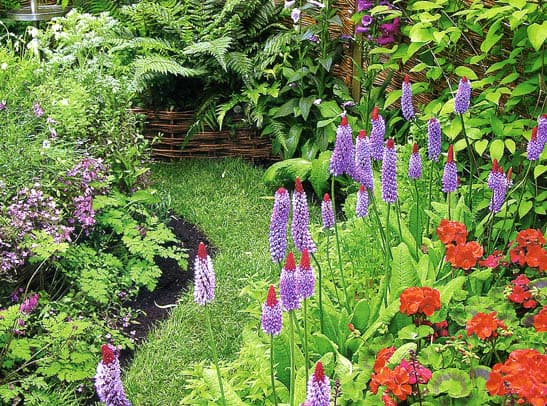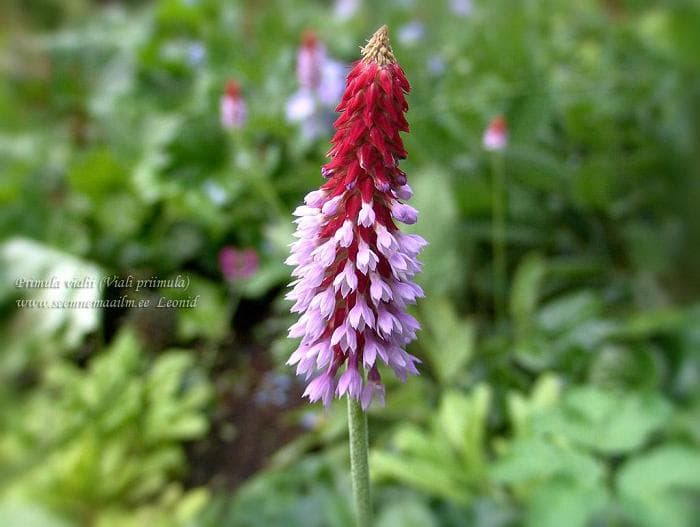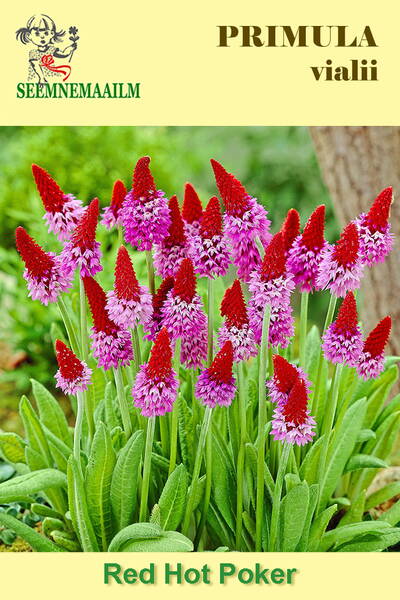One of the most charming and extravagant species of primroses. A perennial orchid-like plant with a rosette of lanceolate leaves up to 30 cm long. Forms spike-shaped inflorescences up to 8 cm long with bright red buds, which, opening from the bottom up, turn into lavender-purple fragrant flowers 1-2 cm in diameter.

Characteristics:
-
Flowering period: June-July (4-5 weeks)
-
Flower color: Bright red buds, lavender-purple flowers
-
Height with flower stalks: Up to 30 cm
-
Growth type: Rosette
-
Feature: Flowers change color when opening.
Cultivation:
-
Hardiness zones: Z6-Z8
-
Soil: Moist, fertile, well-drained
-
Location: Semi-shaded areas
-
Sowing: With preliminary stratification for 3-4 weeks
-
Germination: At +10°C, seedlings appear in 25 days.
Use:
Ideal for rockeries, alpine hills, rock gardens. Used for decorating shaded areas, in borders and under tree canopies.
Additional information:
-
Young plants quickly reach the flowering phase
-
Requires winter shelter in northern regions
-
Plantings should be dense/closed
-
1.0 g = 17,500 seeds.
Value of the variety:
Extravagant appearance, long flowering period, low maintenance. An excellent choice for creating accents in shade compositions.

Bot. syn.: Primula littoniana Forrest.
Cultivation.
Sowing: February-April for seedlings. Seeds require preliminary stratification: sow the seeds (press lightly into the soil), moisten with a sprayer, cover with glass and place in the refrigerator (temperature +5...+7°C). Keep the crops under these conditions for 7-10 days, then transfer to room conditions. Constantly monitor the moisture of the crops. At a temperature of +18...+20°C, seedlings appear in 10-14 days. Seedlings are pricked out in the phase of 2-3 pairs of true leaves. Seedlings are planted in a permanent place after the end of spring frosts. Prefers semi-shady places with well-drained, loose, fertile, sufficiently moist soil.
Care: For prolonged and abundant flowering, plants require timely watering, regular weeding, loosening and feeding. A special complex mineral fertilizer that promotes growth and prolonged flowering of flower crops is used for feeding. For winter, it is recommended to add light nutritious soil to the bushes to protect them from "heaving" and cover them with spruce branches.
Flowering: In the second year, in June-July.












